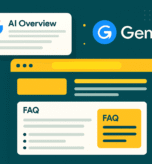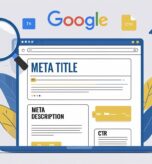In today’s digital world, meta tags still play an important role in how your website performs in search engines like Google. They help search engines understand what your page is about and show the right information to users in search results. If you’re new to SEO, learning about meta tags is a great first step.
This beginner-friendly guide will explain what meta tags are, how they work, and why they still matter in 2025. From the title tag and meta description to the robots tag and viewport tag, we’ll walk you through each important tag and how it can improve your site’s visibility and user experience.
What Are Meta Tags?
Meta tags are small pieces of HTML code that sit in the Head section of a webpage. They don’t show up on the visible page content, but they speak directly to search engines. Think of them as short notes that tell Google what your page is about and how it should be displayed in search results.
Meta tags are very important for SEO. They help search engines understand your website’s content and decide how to rank it. If you’re new to SEO, understanding what meta tags are and how they work is a great place to start.
There are different meta tag types, each serving a specific purpose:
- Title – Shows the page title in browser tabs and search engine results. It’s one of the most important meta tags for SEO.
- Meta name=”description” – Gives a short summary of the page. Search engines often show this in search snippets.
- Meta name=”robots” – Tells search engines whether to index the page or follow its links.
- Meta name=”viewport” – Helps make pages responsive on mobile devices.
- Social tags (like Open Graph and Twitter Cards) – Control how your page looks when shared on social media platforms.
By using the right meta tags, you can help search engines display your site properly and improve your chances of ranking higher. They may be hidden in the code, but they play a big role in making your content more visible online.
Different Types of Meta Tags You Should Know
1. Title Tag
The title tag is one of the most important parts of on-page SEO. It tells both search engines and users what your page is about. It’s the clickable blue link you see in Google search results.
Search engines use the title tag to understand the topic of your page. A well-written title tag can improve your rankings and increase your click-through rate.
Best Practices for Title Tags
- Keep it between 50–60 characters.
- Place your main keyword near the beginning.
- Make it unique for every page.
- Don’t repeat the same title on different pages
2. Meta Description
The meta description is a short summary of a web page. It appears just below the title in search engine results pages (SERPs). While it’s not a direct ranking factor, it plays a big role in getting users to click on your page.
Even though Google may sometimes rewrite it, a good meta description can increase your click-through rate (CTR). A well-written summary tells users what to expect before they even open your page.
Tips for Writing Effective Meta Descriptions:
- Keep it under 160 characters.
- Make sure it matches the search intent.
- Use an active voice and create a sense of value or urgency.
- Include your main keyword naturally.
3. Robots & Googlebot Meta Tags
The robots meta tag helps you tell search engines what to do with your web pages. It controls whether a page should be indexed or not, and whether its links should be followed.
Common Robots Meta Tag Values:
- Index: Allows the page to appear in search results.
- No index: Tells search engines not to show the page in search results.
- Follow: Allows search engines to follow links on the page.
- No follow: Tells them not to follow any links on the page.
What Is the Googlebot Meta Tag?
The googlebot tag works the same way as the robots tag, but it’s used to give instructions only to Google’s crawler.
Advanced Tags to Know:
- nositelinkssearchbox: Stops Google from showing a site search box under your site in search results.
- max-snippet: Controls how much of a snippet Google shows.
- max-image-preview: Controls the size of image previews.
Using the right robots meta tag or googlebot tag gives you more control over how your site appears in search engines. If you want better indexing and crawling, this is one meta tag you don’t want to ignore.
4. Viewport Meta Tag
The viewport meta tag is one of the most important HTML tags for mobile SEO. It tells the browser how to control the page’s dimensions and scaling on different screen sizes, especially smartphones and tablets.
Without this tag, your website might look too zoomed-out or too small on mobile devices, making it hard for users to read or navigate.
Why the Viewport Meta Tag Matters:
- It improves mobile user experience by making your layout responsive.
- It helps with page speed and Core Web Vitals, which are important for SEO.
- It supports mobile-first indexing, which Google now uses to rank most websites.
5. Other Useful Meta Tags You Should Know
Meta tags don’t stop at just title and description. There are a few more that play an important role in your website’s SEO and how it appears across platforms. Let’s look at three valuable tags every beginner should know.
- Canonical Meta Tag
The canonical tag helps search engines understand which version of a page is the original one. This is useful when you have similar content on different URLs.
Why it matters:
- Prevents duplicate content issues.
- Ensures SEO value is passed to the main version of a page.
- Helps your page rank properly without confusion.
- Open Graph Tags (OG Tags)
Open Graph (OG) tags are used to control how your content looks when shared on social media platforms like Facebook, LinkedIn, or X (Twitter).
Why it matters:
- Makes your links look attractive on social media.
- Increases click-through rates from social platforms.
- Helps with branding and visual identity online.
- Alt Text for Images
Although not a meta tag, alt text is critical for SEO. It describes what an image is about, helping search engines and users with visual impairments.
Why it matters:
- Boosts your site’s image SEO.
- Helps with Google image search rankings.
- Improves accessibility and UX.
Why Should You Avoid Meta Keywords?
In the early days of SEO, meta keywords were commonly used to help search engines understand a webpage’s content. But over time, search engines like Google and Bing have evolved, and so have their algorithms.
Today, meta keywords are no longer useful. In fact, relying on them can actually hurt your SEO efforts.
Here’s why meta keywords are outdated:
- Search engines completely ignore them.
- They can be a spam signal, especially if overused.
- They make it easier for competitors to copy your keyword strategy.
Many beginners still wonder if meta keywords have any place in modern SEO. If you’re curious about how they started and why they’ve lost value, we’ve already covered that in more detail in our guide on whether Meta keywords still matter today.
Meta Tag Optimization Checklist
If you want your web pages to rank better in search engines, using meta tags the right way is very important. Here’s a simple meta tag checklist to help improve your on-page SEO without making things complicated:
- Write unique title and meta description
Every page should have its own title and description that clearly explains what it’s about. Try to include your main keywords naturally. - Use keywords carefully
Add your target keywords where they make sense, but avoid overusing them. Keyword stuffing can hurt your rankings. - Set correct index/noindex tags
Make sure search engines know which pages they should or shouldn’t include in search results. For example, use no index for thank-you or login pages. - Make sure your site is mobile-ready
Add a viewport meta tag so your website looks good and works well on mobile devices. - Add schema, canonical, and social tags
These help search engines understand your content better and avoid duplicate content problems. Social meta tags also make your links look nice when shared online. - Review and update regularly
SEO changes over time, so don’t forget to check and improve your meta tags every few months.
Conclusion: Why Meta Tags Still Matter in SEO
To sum up, meta tags are still one of the easiest and most powerful tools to help your content rank better on search engines. Even small updates to your title tags, meta descriptions, and other important meta elements can make a big difference in how search engines understand your page.
This meta tag SEO summary shows that taking the time to add and improve meta tags is worth the effort. They don’t just help with SEO, they also improve user experience by showing clear and useful previews in search results.
Keep this meta tags guide handy as you optimize your content. And if you want to dive deeper, don’t miss our guide on how to use meta keywords in today’s SEO strategy.




